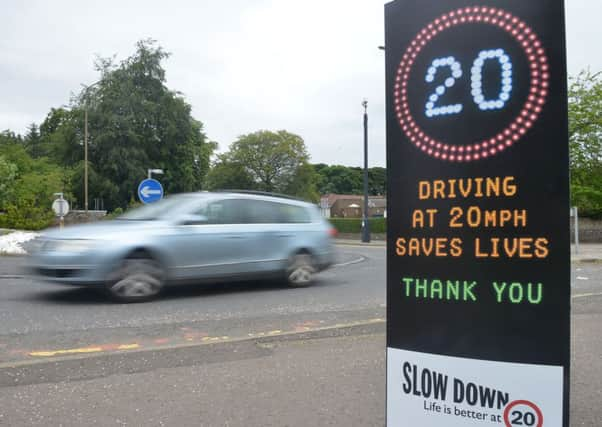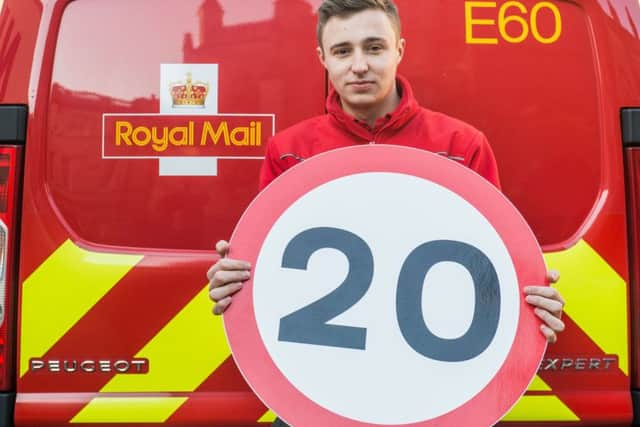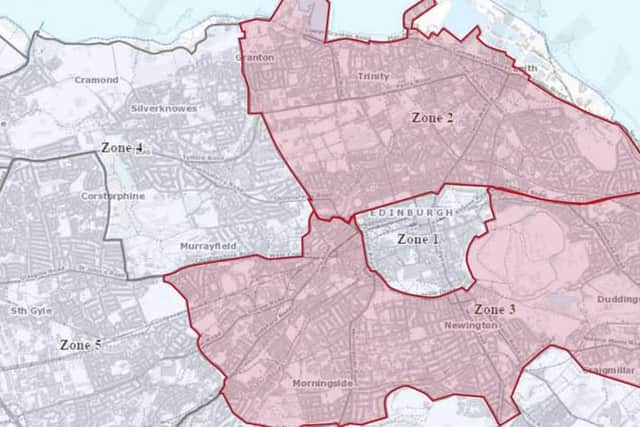Phase 2 of 20mph limit to stretch from Leith to Morningside


Following the introduction of the new lower limit to the city centre and rural west Edinburgh on July 31, it will be expanded to cover residential and shopping streets from Leith to Morningside from February 28, with road signs and markings appearing as early as next month.
Transport convener Lesley Hinds stressed that arterial routes would still have 30 or 40mph limits, but said slower traffic speeds in other roads would help make people safer.
Advertisement
Hide AdAdvertisement
Hide AdIn the four months since the first phase began, police have carried out 21 speed checks and handed out 13 tickets and 68 warnings to motorists.


But no accident statistics or data on average speeds are available yet.
Councillor Hinds said initial feedback from ongoing monitoring and research suggested high levels of awareness about the new limit.
She said: “The police have been out and they have been taking action, but it’s about driver behaviour. I’m a driver myself and I think you have to be more aware, bring your speed down – it might take you a few minutes longer, but this is about road safety and Edinburgh is leading the way on this in Scotland.
Advertisement
Hide AdAdvertisement
Hide Ad“The evidence from England is it brings down accidents and makes people feel safer in their own communities.


“This has been through a long consultation process and I believe we have got support in the city for that.
“When I go to community councils they’re wanting to know when it’s coming to their area.”
Charlotte Encombe, secretary of Leith Central community council, said she thought people were broadly in favour of the limit.
Advertisement
Hide AdAdvertisement
Hide AdShe said: “Speaking personally, I think it’s a really good initiative and in time, I hope, everybody will stick to that limit.


“If it’s not enforced in some way then it will take quite a long time. I think there will probably need to be more narrowing of roads and other things to slow traffic down. It will take a while, but it will get there.”
Neil Greig, the Institute of Advanced Motorists’ head of policy in Scotland, said he was surprised the council had not presented evidence of how the lower limit was working.
“They have been pretty forward in producing reports in the past,” he said.
Advertisement
Hide AdAdvertisement
Hide Ad“They obviously see this as just the next phase and people are supposed to accept it.


“But especially now the police are enforcing it, it’s really important they keep the public with them.
“Even though 13 might not sound many tickets, if those 13 people feel they were driving on a road that looked and felt safe and doesn’t have an obvious accident problem, that’s when support could fall off for 20mph.
“Particularly when you have enforcement you need to produce as much evidence as possible to back up that enforcement. They should be evaluating it all the time and making it as open as possible.”
Advertisement
Hide AdAdvertisement
Hide AdMr Greig said the UK Department for Transport was due to publish an assessment of 20mph zones in the near future.
But he said: “What you tend to find is it has a little impact on speeds and not much on accidents because there weren’t many before.
“But even though we are a motoring organisation, the key issue is whether it makes people feel safer and they are walking and cycling more because of that. I think the jury is still out on that.”
Nick Cook, the Tories’ transport spokesman on the council, is still opposed to a blanket 20mph limit.
Advertisement
Hide AdAdvertisement
Hide AdHe said: “We still don’t consider this project a wise use of taxpayers’ money. I don’t think it has led to a fundamental change in behaviour which is ultimately what it’s aiming for.
“We have always argued a 20mph limit is an appropriate mechanism but it needs to be targeted in areas where it can be shown there is a problem of excessive speed.”
Ian Maxwell, of cycling campaign group Spokes, said the evidence from elsewhere in the UK showed that 20mph limits “take a significant amount off the average speed”.
He added: “I would hope most people will realise it’s worthwhile doing. The sky hasn’t fallen in and the world is still turning. I think it seems to be working.
Advertisement
Hide AdAdvertisement
Hide Ad“It’s not something that has a spectacular, big bang result. But there doesn’t seem to have been a major problem with it so far, and I think it’s bedding in quite nicely.”
But Jerry Stewart, co-director of Eagle Couriers, Scotland’s largest independent courier with more than 120 vehicles, was less convinced. He said: “We have always fully supported the introduction of tough speed restrictions in key areas, such as schools, nurseries and residential areas.
“Yet the feedback we have received from our drivers has been that the roll-out so far is confusing and a heavy handed approach. This is unlikely to change during the next phase.
“I would have preferred to see greater investment in the quality of the road surfaces – and feel the money spent on the 20mph campaign and the associated enforcement would have been put to better use sorting the Capital’s dangerous pothole problem.”
Advertisement
Hide AdAdvertisement
Hide AdThe council said a pilot 20mph scheme in South Edinburgh in March 2012 resulted in people feeling safer and readier to walk or cycle to work.
The average speed in streets with the new limit fell to 20.9mph, a fall of just under 2mph. There was a reduction in casualties of 20 per cent. And 79 per cent of local residents backed the new limit, with only four per cent against it.
In Portsmouth it is estimated that 20mph limits have lowered road casualties by eight per cent while in Warrington there is said to have been a reduction in collisions of 25 per cent in 20mph speed limit areas.
The council said average speeds were being monitored for each phase before implementation, three months afterwards and 12 months afterwards. Accident statistics would also be part of the monitoring process.